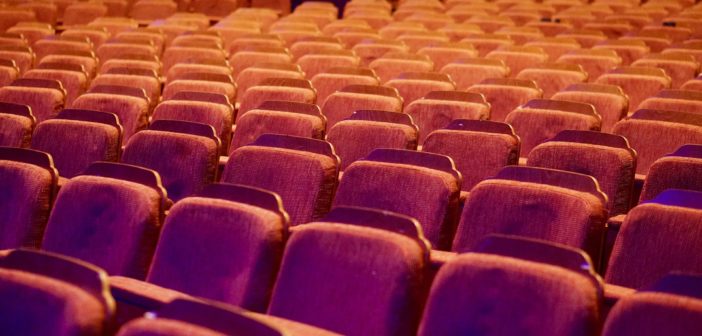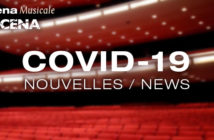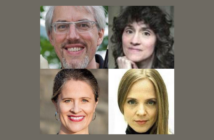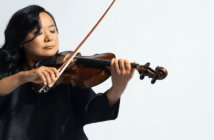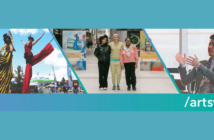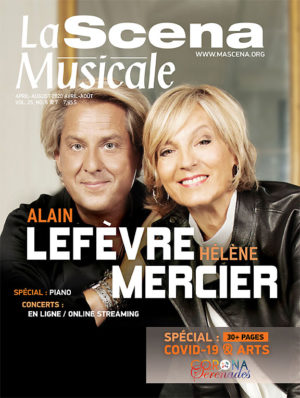
This page is also available in / Cette page est également disponible en:
Français (French)
Field of Dreams, the deservedly classic 1989 film, generated my paraphrased title “If We Build It, Will They Come?” An Iowa farmer hears a voice informing him that, if he transforms his corn acreage into a baseball field, the legendary Shoeless Joe Jackson will show up with his teammates to play ball.
The “it” here is Quebec’s policies for rebooting the arts, subject to COVID-19 precautions. The “they” are you, me and every other arts enthusiast deciding whether social distancing policies are sufficient to protect us in the concert hall.
Canada’s arts sectors are treading water in a pandemic sea of unknowns. Arts Response Tracking Studies (ARTS), sponsored by Business/Arts and the National Arts Centre and conducted in May by Nanos Research, gives us a firmer understanding of how audiences will respond when venues reopen. The Canadian Opera Company and the Woodbridge investment firm will join the partnership for a second survey in August.
On June 9, Business/Arts and NAC presented the first results via Zoom. CAPACOA, the Canadian Association for the Performing Arts, is catalyzing its members to conduct parallel research. This will leverage shared information across regions and arts sub-sectors.
Round One ARTS survey goals were: 1) a pre-pandemic baseline measuring Canada’s public for arts events; 2) timeframe estimates for audience willingness to reenter venues under protective norms specified by provincial health authorities; 3) discovering how much, if anything, Canadians will pay for quality internet streaming of live arts events.
The ARTS research has a broad-tent take on what constitutes the arts. In music this runs from pop and heritage/folk through opera. The data tracks most music subsectors of primary interest to La Scena readers – classical, opera and dance – with the exception of jazz. The random sample of 1001 Canadians aged 18 plus polled May 17-19 is sufficient to generate national results within an error range of 3.1%.
Even crème de la crème survey research faces fundamental challenges to tracking public arts behavior. People are queried about a moving target. Answers to identical questions in May, June or especially July will differ because of COVID-19’s mutating trajectory.
Still, the ARTS survey is an accurate snapshot of public attitudes on rebooting the sector at one point along the trajectory. If that trajectory doesn’t change drastically, ARTS provides a good indicator of what Canadians will decide this autumn.
First, let’s check the benchmark measurements of Canadian public attendance practices during the year preceding the pandemic. In terms of attending indoor cultural events: 49 % attended at least one theatre performance; a popular music performance, 39 %; classical music, 19%; cultural or heritage events, 18%; ballet and dance, 11%; opera, 5%. Thirty-one percent did not attend any live cultural event indoors.
Canada’s adult population in 2019 numbered 30.4 million. Assuming significant overlaps between people attending classical music, ballet and dance and opera, a reasonable estimate of the art music and dance audience would be roughly six million. That takes in attending anything from one free community concert to a subscription at the Four Seasons Centre.
Two major pandemic-related issues are in play: 1) intentions about resuming attendance when governments allow venues to be partially filled under controlled conditions; 2) if, and how much, arts audiences are willing to pay for internet broadcasts of live performances.
For the September conditional reopening, a substantial proportion of respondents in central Canada are ready to resume attending arts events as soon as venues reopen: 48% in Quebec and 42% in Ontario. The immediate readiness intention rate in other regions varies between 28% and 33%.
High figures for central Canada relative to the rest of the country likely reflect the concentration of Canada’s arts audiences and arts professionals in Toronto and Montreal. In that early-entry group, only a third indicated that they’d be comfortable with physical distancing. Only a quarter would be comfortable wearing masks.
Most scientists concur that wearing masks and social distancing are necessary to keep COVID-19 infection rates down. This appears to be outside the comfort zone of a majority of respondents wanting to return immediately to performance venues.
A second and larger subgroup, 35%, is unsure what they’ll do when venues reopen. 37% of this population segment would feel comfortable going back if a vaccine is available.
The largest subgroup, 37%, intends to wait things out for an average of 5.2 months. Among respondents intending to wait at least six months before re-entering a performance hall, 44% want an effective vaccine.
It’s not clear whether science can develop an effective vaccine against the COVID-19 virus.
The bottom line for the 2020 season opening: venues will be only partially filled for some time. For music professionals to pay their rent, a new mix of reduced venue attendance, revenue-earning Internet streams, government support and private philanthropy are necessary for the sector to thrive and survive.
One encouraging dimension of the ARTS research indicates the opposite of the truism that today’s audiences are habituated to free music streams and will not pay fees. Fee-based HD classical music streaming was in expansion mode during the year preceding the pandemic. The Nanos data indicates that only one in 10 respondents will not pay for cultural broadcasting. The 90% who answered that they would pay indicated amounts ranging from 10% to 50% of what a live performance would cost.
This page is also available in / Cette page est également disponible en:
Français (French)

